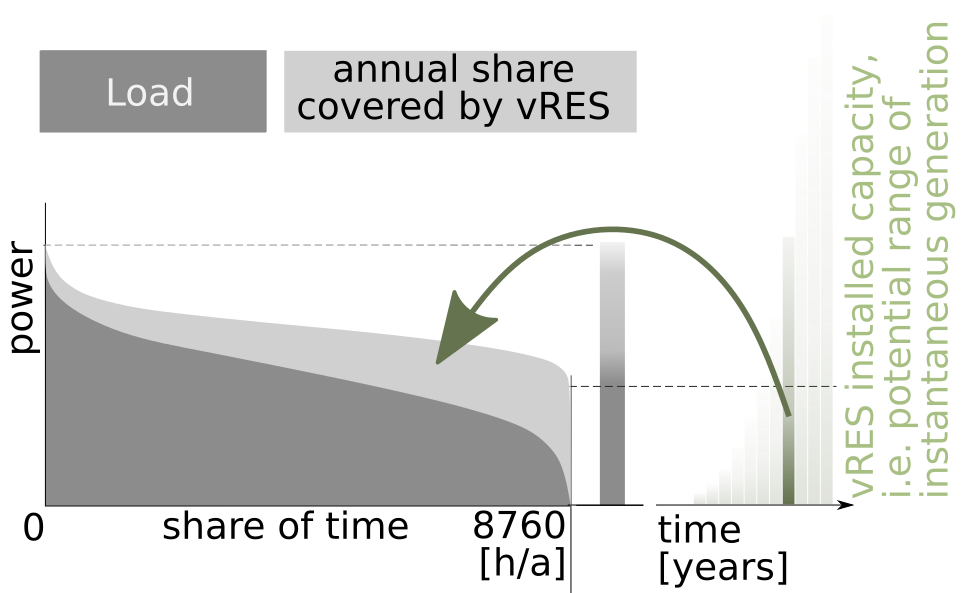vRES capacities increase over time (see the bars at the right of the graph).
At one stage of development, a given vRES capacity supplies a certain amount of the annual load
(indicated by the lighter area under the Load Duration Curve matched to one specific capacity by the arrow).
The difference between load and vRES generation is called the
residual load.
The LDC of the residual load can be derived exactly the same way as for the load.
The original LDC is shifted down.
In the graph, the residual load is the dark area under the LDC.
This part has to be supplied by dispatchable generation.
This is the energy perspective.
In terms of power, conditions are more challenging.
Even with high vRES capacities installed, there will be many hours
they apparently do not contribute to the instantaneous load.
(That's why the bar for the installed vRES capacity in the graph is fading out to the top.)
Generally, wind and sun are not strongly correlated with load.
Also in hours with high load, there may be low vRES generation.
Hence, the peak residual load at the left side of the LDC is only slightly lower than the peak load.
(Jargon: the 'capacity credit' of vRES is limited.)
But on a sunny and windy day, instantaneous vRES output may be close to the installed capacity, and,
depending on the installed base, may exceed the instantaneous load.
In the latter case, the residual load at this moment in time becomes negative.
This tendency is visible at the right side of the LDC.
vRES and dRES, both, are based on renewables.
It would be logical to also substract dRES when calculating the residual load.
From the perspective of vRES integration, however,
dRES characteristics are more similar to those of other dispatchable technologies, like thermal generation.
For that reason, we decided to substract only vRES when illustrating the phases in the various graphs.
dRES are included in the supply from all other dispatchable technologies as part of the residual load.
Of course, when discussing a
country's conditions and challenges, we treat the matter more subtle.





